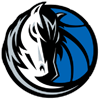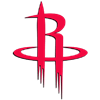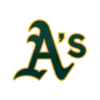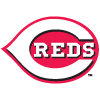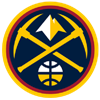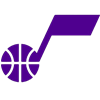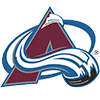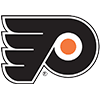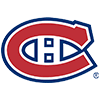One of the most interesting storylines to follow this season has been the performance of a deep and talented group of rookie hitters. My last barometer before the start of the regular season featured a full five rookies, a reflection of the excitement that came with the offseason change that incentivized teams to call up their best prospects right away.
Three notable names weren't part of that group: Adley Rutschman and Riley Greene, who were out with injuries, and Oneil Cruz, whom the Pirates elected to keep in the minors despite the rule change. Rutschman has been up since late May, and with Greene and Cruz now in the majors as well, we've now seen almost the full set of rookies who were expected to make an impact at some point.
The early narrative seemed to be that a large number of those highly touted rookies were struggling, suggesting that the gap between Triple-A and the majors may be as large as it's been in a while, but many of them have turned things around recently. This rookie class' 87 wRC+ is tied for the second-best mark of the last 100 years, though it's possible that number will drop late in the year as a number of lesser-rated prospects get cups of coffee. Here's a look at how the highest-drafted rookie hitters and a handful of other top rookies have fared thus far:
| Player | Pos | Team | NFBC ADP | Earned Value Rank |
|---|---|---|---|---|
| Bobby Witt Jr. | 3B/SS | KCR | 82 | 54 |
One of the most interesting storylines to follow this season has been the performance of a deep and talented group of rookie hitters. My last barometer before the start of the regular season featured a full five rookies, a reflection of the excitement that came with the offseason change that incentivized teams to call up their best prospects right away.
Three notable names weren't part of that group: Adley Rutschman and Riley Greene, who were out with injuries, and Oneil Cruz, whom the Pirates elected to keep in the minors despite the rule change. Rutschman has been up since late May, and with Greene and Cruz now in the majors as well, we've now seen almost the full set of rookies who were expected to make an impact at some point.
The early narrative seemed to be that a large number of those highly touted rookies were struggling, suggesting that the gap between Triple-A and the majors may be as large as it's been in a while, but many of them have turned things around recently. This rookie class' 87 wRC+ is tied for the second-best mark of the last 100 years, though it's possible that number will drop late in the year as a number of lesser-rated prospects get cups of coffee. Here's a look at how the highest-drafted rookie hitters and a handful of other top rookies have fared thus far:
| Player | Pos | Team | NFBC ADP | Earned Value Rank |
|---|---|---|---|---|
| Bobby Witt Jr. | 3B/SS | KCR | 82 | 54 |
| Seiya Suzuki | OF | CHC | 178 | 295 |
| Adley Rutschman | C | BAL | 209 | 912 |
| Oneil Cruz | SS | PIT | 219 | N/A |
| Julio Rodriguez | OF | SEA | 231 | 29 |
| Spencer Torkelson | 1B | DET | 242 | 699 |
| Riley Greene | OF | DET | 340 | N/A |
| Jeremy Pena | SS | HOU | 426 | 83 |
| MJ Melendez | C | KCR | 458 | 386 |
| Josh Lowe | OF | TBR | 459 | 880 |
| Bryson Stott | 2B/SS | PHI | 467 | 566 |
| Steven Kwan | OF | CLE | 554 | 308 |
| Nolan Gorman | 2B | STL | 582 | 478 |
| Juan Yepez | 1B/OF | STL | 607 | 326 |
| Brendan Donovan | 2B/3B/OF | STL | 748 | 233 |
| Michael Harris | OF | ATl | 751 | 383 |
| Christopher Morel | 2B/OF | CHC | 751 | 229 |
| Luis Gonzalez | OF | SFG | 751 | 170 |
| Jack Suwinski | OF | PIT | N/A | 226 |
Reading too much into less than half a season's worth of performance from 20 players is unwise, and we shouldn't use the above list to conclusively state that building around rookie hitters is the way to go. Still, the early fears that rookie hitters were a particularly poor investment seem overblown. There have certainly been some landmines, most notably Spencer Torkelson, and those who drafted Rutschman, Greene and Cruz haven't gotten value for their money just yet, but the number of worthwhile rookie picks has been quite high overall. Julio Rodriguez looks like he could flirt with a first-round slot next year, and even Bobby Witt Jr., whom I and many analysts had minimal interest in at his price, has turned a profit. They've been joined by a large number of players who went very late or who were rarely drafted anywhere who've turned into quality contributors.
Just one of those rookie hitters, one who wasn't drafted a single time in this offseason's NFBC contests, will feature in this week's article, but many others have found space here in recent weeks. Greene and Cruz could certainly have justified spots here based on their promotions alone, but for now we'll focus on a handful of other players, with those two likely to show up sooner rather than later if they live up to their considerable promise.
RISERS
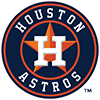 Yordan Alvarez, OF, Astros: There were never any doubts about Alvarez's bat, but he finished with a relatively modest NFBC average draft position of 26.6 due to injury concerns and the fact that he doesn't run. Neither of those factors has changed (and he did just sit Sunday due to a hand injury, though it's supposedly a minor one), but the way his season has gone so far suggests that he could be pushing to join the likes of Vladimir Guerrero and Juan Soto as bat-only first-round hitters. After hitting a ridiculous .455/.519/.818 with six homers in his last 18 games, he now owns a .311/.403/.623 line on the season, good for a career-high 193 wRC+. That line is backed by a number of career bests (assuming you ignore his two-game 2020 campaign). Most encouragingly, his 15.7 percent strikeout rate is far better than the already acceptable 24.6 percent mark he carried into this season, and he hasn't sacrificed any power to get there, as evidenced by his league-leading 62.9 percent hard-hit rate. Still just 24, the sky's the limit for Alvarez's bat as long as he stays on the field.
Yordan Alvarez, OF, Astros: There were never any doubts about Alvarez's bat, but he finished with a relatively modest NFBC average draft position of 26.6 due to injury concerns and the fact that he doesn't run. Neither of those factors has changed (and he did just sit Sunday due to a hand injury, though it's supposedly a minor one), but the way his season has gone so far suggests that he could be pushing to join the likes of Vladimir Guerrero and Juan Soto as bat-only first-round hitters. After hitting a ridiculous .455/.519/.818 with six homers in his last 18 games, he now owns a .311/.403/.623 line on the season, good for a career-high 193 wRC+. That line is backed by a number of career bests (assuming you ignore his two-game 2020 campaign). Most encouragingly, his 15.7 percent strikeout rate is far better than the already acceptable 24.6 percent mark he carried into this season, and he hasn't sacrificed any power to get there, as evidenced by his league-leading 62.9 percent hard-hit rate. Still just 24, the sky's the limit for Alvarez's bat as long as he stays on the field.
 Willson Contreras, C, Cubs: For the past few years, Contreras has been the catcher to target if you like to pay up for a good backstop but missed out on the top-tier options like J.T. Realmuto, Salvador Perez and Will Smith. This year, however, he's been the best of the bunch, and by quite a wide margin if you believe our earned auction values. In the first six seasons of Contreras' career, we saw the very good version (a wRC+ between 122 and 126) three times and the merely solid version (a wRC+ between 101 and 109) in the other three years. While the latter version is what we saw in both of the last two campaigns, Contreras seems to have become something else entirely in his contract season. His .283/.395/.532 slash line is good for a career-high 159 wRC+, and he's backed that up with more career bests in his underlying numbers. He's cut his strikeout rate from a career-high 28.6 percent last season to a career-low 19.8 percent this year, and he's added power while doing so, as both his 11.5 percent barrel rate and 53.5 percent hard-hit rate are also personal bests.
Willson Contreras, C, Cubs: For the past few years, Contreras has been the catcher to target if you like to pay up for a good backstop but missed out on the top-tier options like J.T. Realmuto, Salvador Perez and Will Smith. This year, however, he's been the best of the bunch, and by quite a wide margin if you believe our earned auction values. In the first six seasons of Contreras' career, we saw the very good version (a wRC+ between 122 and 126) three times and the merely solid version (a wRC+ between 101 and 109) in the other three years. While the latter version is what we saw in both of the last two campaigns, Contreras seems to have become something else entirely in his contract season. His .283/.395/.532 slash line is good for a career-high 159 wRC+, and he's backed that up with more career bests in his underlying numbers. He's cut his strikeout rate from a career-high 28.6 percent last season to a career-low 19.8 percent this year, and he's added power while doing so, as both his 11.5 percent barrel rate and 53.5 percent hard-hit rate are also personal bests.
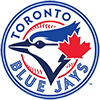 Alejandro Kirk, C, Blue Jays: I targeted Kirk heavily in draft season on the theory that his 11.6 percent strikeout rate and 11.0 percent barrel rate in 60 games last year made for an excellent combination for anybody, let alone a 22-year-old catcher. Over his first 37 games this season, the results were admittedly quite mediocre, as he hit a forgettable .259/.344/.324 with one homer and a 5.1 percent barrel rate. Since then, he's turned things around dramatically. His barrel rate has soared to 14.5 percent in his last 21 games, helping him to five homers and a .380/.476/.676 slash line. His excellent contact ability has remained present through both stretches, as he now owns a 10.0 percent strikeout rate, a mark that comes in lower than his 12.4 percent walk rate. The arrival of Gabriel Moreno in theory problematic for Kirk's playing time, as the catcher depth chart will get quite crowded once Danny Jansen returns from his finger injury, but Kirk's bat is special enough that the Blue Jays should keep him in the lineup as the designated hitter often enough that he'll remain one of the league's best fantasy catchers.
Alejandro Kirk, C, Blue Jays: I targeted Kirk heavily in draft season on the theory that his 11.6 percent strikeout rate and 11.0 percent barrel rate in 60 games last year made for an excellent combination for anybody, let alone a 22-year-old catcher. Over his first 37 games this season, the results were admittedly quite mediocre, as he hit a forgettable .259/.344/.324 with one homer and a 5.1 percent barrel rate. Since then, he's turned things around dramatically. His barrel rate has soared to 14.5 percent in his last 21 games, helping him to five homers and a .380/.476/.676 slash line. His excellent contact ability has remained present through both stretches, as he now owns a 10.0 percent strikeout rate, a mark that comes in lower than his 12.4 percent walk rate. The arrival of Gabriel Moreno in theory problematic for Kirk's playing time, as the catcher depth chart will get quite crowded once Danny Jansen returns from his finger injury, but Kirk's bat is special enough that the Blue Jays should keep him in the lineup as the designated hitter often enough that he'll remain one of the league's best fantasy catchers.
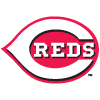 Tyler Mahle, SP, Reds: Mahle's season got off to an ugly start, as his ERA sat at 7.01 through his first six starts. His strikeout rate fell to 21.7 percent over that stretch while his walk rate jumped to 11.7 percent. Since then, however, the 27-year-old righty has looked like an entirely different pitcher. His strikeout rate has soared to 30.5 percent over his last eight outings, while he's trimmed his walk rate to 8.1 percent, helping him to a 3.12 ERA. There are still some negatives here, as pitching for the lowly Reds has meant he's only won one game over that stretch, and he did still have one blowup, an ugly eight-run outing against the Cubs in late May. Still, it's a very encouraging turnaround, and it's safe to plan on Mahle's ERA being much better than his overall 4.46 mark going forward. Even with the poor early stretch included, Mahle's SIERA sits at a solid 3.70, the best mark of his six-year career.
Tyler Mahle, SP, Reds: Mahle's season got off to an ugly start, as his ERA sat at 7.01 through his first six starts. His strikeout rate fell to 21.7 percent over that stretch while his walk rate jumped to 11.7 percent. Since then, however, the 27-year-old righty has looked like an entirely different pitcher. His strikeout rate has soared to 30.5 percent over his last eight outings, while he's trimmed his walk rate to 8.1 percent, helping him to a 3.12 ERA. There are still some negatives here, as pitching for the lowly Reds has meant he's only won one game over that stretch, and he did still have one blowup, an ugly eight-run outing against the Cubs in late May. Still, it's a very encouraging turnaround, and it's safe to plan on Mahle's ERA being much better than his overall 4.46 mark going forward. Even with the poor early stretch included, Mahle's SIERA sits at a solid 3.70, the best mark of his six-year career.
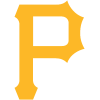 Jack Suwinski, OF, Pirates: Suwinski's three-homer day Sunday against the Giants gave him 11 bombs through his first 162 major-league plate appearances, the equivalent of 41 home runs over a full, 600-plate appearance season. That's very legitimate pop, and it's backed by a 14.0 percent barrel rate, a mark that sits in the 91st percentile. A tool that strong puts Suwinski on the fantasy map despite the fact that there are notable weaknesses to his game. His 29.6 percent strikeout rate is quite high and suggests he's unlikely to do much better than his current .230 batting average, and his .296 on-base percentage means he's really going to have to keep hitting for power to remain in the lineup on a regular basis. That's even more true when considering that he's not much of a defender. FanGraphs' scouting report put a 20 (the lowest possible rating) on his glove, and both DRS and UZR are pessimistic so far. Still, the power looks very real and has helped him to six homers and a 199 wRC+ thus far in June, making him an interesting option despite his flaws and despite his tough home park and weak surrounding lineup.
Jack Suwinski, OF, Pirates: Suwinski's three-homer day Sunday against the Giants gave him 11 bombs through his first 162 major-league plate appearances, the equivalent of 41 home runs over a full, 600-plate appearance season. That's very legitimate pop, and it's backed by a 14.0 percent barrel rate, a mark that sits in the 91st percentile. A tool that strong puts Suwinski on the fantasy map despite the fact that there are notable weaknesses to his game. His 29.6 percent strikeout rate is quite high and suggests he's unlikely to do much better than his current .230 batting average, and his .296 on-base percentage means he's really going to have to keep hitting for power to remain in the lineup on a regular basis. That's even more true when considering that he's not much of a defender. FanGraphs' scouting report put a 20 (the lowest possible rating) on his glove, and both DRS and UZR are pessimistic so far. Still, the power looks very real and has helped him to six homers and a 199 wRC+ thus far in June, making him an interesting option despite his flaws and despite his tough home park and weak surrounding lineup.
FALLERS
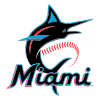 Trevor Rogers, SP, Marlins: Rogers struggled to a 12.15 ERA and 6:5 K:BB over his first two starts, but it looked as though he might be turning things around over his next five, a stretch in which he owned a 2.45 ERA. Since then, however, he's been as bad as ever. Over his last five outings (not including Monday's start, which is in progress as of writing), he owns an 8.02 ERA and 2.02, striking out just 16.2 percent of opposing batters while walking 14.3 percent. Much of his collapse this year seems to be tied to the sudden loss of feel for his change-up, a pitch which graded out excellently last season but which has been entirely ordinary this year. The loss of that weapon means he can no longer put righties away, with his strikeout rate against them dropping from 28.3 percent to 16.4 percent. The optimistic spin here is that he could bounce all the way back if the change-up suddenly re-emerges, but it's getting hard to hold onto him in single-season leagues at this point.
Trevor Rogers, SP, Marlins: Rogers struggled to a 12.15 ERA and 6:5 K:BB over his first two starts, but it looked as though he might be turning things around over his next five, a stretch in which he owned a 2.45 ERA. Since then, however, he's been as bad as ever. Over his last five outings (not including Monday's start, which is in progress as of writing), he owns an 8.02 ERA and 2.02, striking out just 16.2 percent of opposing batters while walking 14.3 percent. Much of his collapse this year seems to be tied to the sudden loss of feel for his change-up, a pitch which graded out excellently last season but which has been entirely ordinary this year. The loss of that weapon means he can no longer put righties away, with his strikeout rate against them dropping from 28.3 percent to 16.4 percent. The optimistic spin here is that he could bounce all the way back if the change-up suddenly re-emerges, but it's getting hard to hold onto him in single-season leagues at this point.
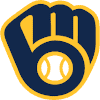 Eric Lauer, SP, Brewers: Lauer was an early-season sensation, as it looked as though the Brewers had suddenly added another ace out of nowhere. After posting a 21.5 percent strikeout rate while throwing a 91.9 mph fastball over his first four years in the majors, Lauer suddenly threw 94.1 mph over his first six starts and struck out an incredible 35.5 percent of opposing batters, helping him to a 2.60 ERA. In six starts since then, however, he's back to looking entirely ordinary. His ERA over that recent run has jumped to 4.59, with his strikeout rate cratering to 15.6 percent. That change comes with a drop in fastball velocity, which sat at 93.0 mph over that slump. The good news here is that's still higher than his previous career mark, but it may not be for long, as his 92.3 mph average velocity in his most recent outing was his lowest of the year. Unless Lauer can regain those extra ticks, it's hard to buy into his early-season dominance returning.
Eric Lauer, SP, Brewers: Lauer was an early-season sensation, as it looked as though the Brewers had suddenly added another ace out of nowhere. After posting a 21.5 percent strikeout rate while throwing a 91.9 mph fastball over his first four years in the majors, Lauer suddenly threw 94.1 mph over his first six starts and struck out an incredible 35.5 percent of opposing batters, helping him to a 2.60 ERA. In six starts since then, however, he's back to looking entirely ordinary. His ERA over that recent run has jumped to 4.59, with his strikeout rate cratering to 15.6 percent. That change comes with a drop in fastball velocity, which sat at 93.0 mph over that slump. The good news here is that's still higher than his previous career mark, but it may not be for long, as his 92.3 mph average velocity in his most recent outing was his lowest of the year. Unless Lauer can regain those extra ticks, it's hard to buy into his early-season dominance returning.
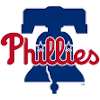 Corey Knebel, RP, Phillies: Things didn't look good for Knebel this time last week. His hold on the Phillies' closer job was tenuous at best, as his 3.24 ERA came with a 4.13 FIP and 23:14 K:BB. He'd also just experienced shoulder tightness while warming up over the weekend, so a trip to the injured list seemed as likely as a demotion out of the closer role. He decided he was healthy enough to give it a go Tuesday against the Marlins, and things couldn't have gone much worse, as he threw just four of his 16 pitchers for strikes in a blown save. The Phillies evidently decided that poor performance wasn't injury related, so he's continued to avoid the injured list, but he has finally been demoted from the closer role, with the team going with a committee instead. Knebel's first appearance in a lower-leverage situation saw him strike out three in a clean inning against the Nationals on Friday, but he followed that up by walking three and allowed two runs across 1.1 innings two days later. The veteran righty has a lot of work to do before proving he deserves another save chance.
Corey Knebel, RP, Phillies: Things didn't look good for Knebel this time last week. His hold on the Phillies' closer job was tenuous at best, as his 3.24 ERA came with a 4.13 FIP and 23:14 K:BB. He'd also just experienced shoulder tightness while warming up over the weekend, so a trip to the injured list seemed as likely as a demotion out of the closer role. He decided he was healthy enough to give it a go Tuesday against the Marlins, and things couldn't have gone much worse, as he threw just four of his 16 pitchers for strikes in a blown save. The Phillies evidently decided that poor performance wasn't injury related, so he's continued to avoid the injured list, but he has finally been demoted from the closer role, with the team going with a committee instead. Knebel's first appearance in a lower-leverage situation saw him strike out three in a clean inning against the Nationals on Friday, but he followed that up by walking three and allowed two runs across 1.1 innings two days later. The veteran righty has a lot of work to do before proving he deserves another save chance.
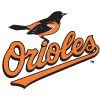 Jorge Mateo, SS/OF, Orioles: This past draft season, Mateo epitomized an archetype of player that I find particularly hard to evaluate. He had great wheels (11 steals in 237 career plate appearances through 2021 to go along with 99th percentile sprint speed) and few obstacles to an everyday role on a depleted Baltimore roster. The question was whether his bat, which had produced a .236/.281/.364 line up to that point, would be good enough to keep him in that role. While those who picked him up cheaply in drafts have already gotten their money's worth from his 17 steals, it may be time to cash in and attempt to swap him for help elsewhere. After producing a dreadful .125/.176/.188 line thus far in June, he now owns a 57 wRC+ on the season, the product of a .202/.239/.322 slash line. His bat simply doesn't look anything close to good enough for a major-league regular, as his 28.6 percent hard hit rate sits in the ninth percentile while his 32.1 percent strikeout rate sits in the third. Even a team without many alternatives like the Orioles should start looking elsewhere when faced with those numbers.
Jorge Mateo, SS/OF, Orioles: This past draft season, Mateo epitomized an archetype of player that I find particularly hard to evaluate. He had great wheels (11 steals in 237 career plate appearances through 2021 to go along with 99th percentile sprint speed) and few obstacles to an everyday role on a depleted Baltimore roster. The question was whether his bat, which had produced a .236/.281/.364 line up to that point, would be good enough to keep him in that role. While those who picked him up cheaply in drafts have already gotten their money's worth from his 17 steals, it may be time to cash in and attempt to swap him for help elsewhere. After producing a dreadful .125/.176/.188 line thus far in June, he now owns a 57 wRC+ on the season, the product of a .202/.239/.322 slash line. His bat simply doesn't look anything close to good enough for a major-league regular, as his 28.6 percent hard hit rate sits in the ninth percentile while his 32.1 percent strikeout rate sits in the third. Even a team without many alternatives like the Orioles should start looking elsewhere when faced with those numbers.
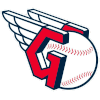 Myles Straw, OF, Guardians: Straw's value comes almost entirely from his legs, just like Mateo's does, but he didn't look like nearly as much of a risk at the plate. His .271/.349/.348 slash line last season was good for a perfectly acceptable 98 wRC+. He looked like more or less the same guy through his 42 games this season, posting a 96 wRC+, but his slump over his last 20 games has been a dramatic one. He's gone hitless 13 times over that stretch, hitting .122/.198/.135, good for a wRC+ of -1. The silver lining here is that he's still making plenty of contact, whiffing just 13.6 percent of the time over that stretch, but his contact all year long has been incredibly weak. He's managed just a single barrel this season, with his 0.5 percent barrel rate and 21.2 percent hard hit rate sitting in the first and second percentile, respectively. He's still managed 11 steals, and he's still starting regularly and for some reason remains in the leadoff spot, but there's a limit to how long he can go on hitting the ball this lightly while remaining an everyday player.
Myles Straw, OF, Guardians: Straw's value comes almost entirely from his legs, just like Mateo's does, but he didn't look like nearly as much of a risk at the plate. His .271/.349/.348 slash line last season was good for a perfectly acceptable 98 wRC+. He looked like more or less the same guy through his 42 games this season, posting a 96 wRC+, but his slump over his last 20 games has been a dramatic one. He's gone hitless 13 times over that stretch, hitting .122/.198/.135, good for a wRC+ of -1. The silver lining here is that he's still making plenty of contact, whiffing just 13.6 percent of the time over that stretch, but his contact all year long has been incredibly weak. He's managed just a single barrel this season, with his 0.5 percent barrel rate and 21.2 percent hard hit rate sitting in the first and second percentile, respectively. He's still managed 11 steals, and he's still starting regularly and for some reason remains in the leadoff spot, but there's a limit to how long he can go on hitting the ball this lightly while remaining an everyday player.








